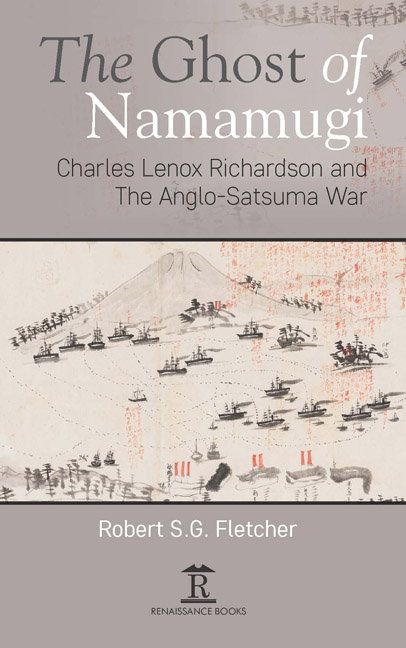60 results
Agricultural Research Service Weed Science Research: Past, Present, and Future
-
- Journal:
- Weed Science / Volume 71 / Issue 4 / July 2023
- Published online by Cambridge University Press:
- 16 August 2023, pp. 312-327
-
- Article
-
- You have access
- Open access
- HTML
- Export citation
12 - The Convivial Conservation Imperative: Exploring “Biodiversity Impact Chains” to Support Structural Transformation
- from Part IV - Transforming Biodiversity Governance in Different Contexts
-
-
- Book:
- Transforming Biodiversity Governance
- Published online:
- 26 May 2022
- Print publication:
- 16 June 2022, pp 244-263
-
- Chapter
-
- You have access
- Open access
- HTML
- Export citation
In Memoriam: Steven Ames Peterson
-
- Journal:
- Political Science Today / Volume 2 / Issue 2 / May 2022
- Published online by Cambridge University Press:
- 02 June 2022, pp. 17-18
- Print publication:
- May 2022
-
- Article
-
- You have access
- HTML
- Export citation
In Memoriam: Steven Ames Peterson
-
- Journal:
- Politics and the Life Sciences / Volume 41 / Issue 1 / Spring 2022
- Published online by Cambridge University Press:
- 21 February 2022, pp. 150-151
-
- Article
-
- You have access
- HTML
- Export citation
Editors’ Preface
-
-
- Book:
- Mediating Empire
- Published by:
- Amsterdam University Press
- Published online:
- 30 April 2022
- Print publication:
- 30 April 2020, pp ix-x
-
- Chapter
- Export citation
Microscale Fluid Mechanics of Making Thin Specimens for Cryo-EM
-
- Journal:
- Microscopy and Microanalysis / Volume 25 / Issue S2 / August 2019
- Published online by Cambridge University Press:
- 05 August 2019, pp. 1352-1353
- Print publication:
- August 2019
-
- Article
-
- You have access
- Export citation
Index
-
- Book:
- The Ghost of Namamugi
- Published by:
- Amsterdam University Press
- Published online:
- 30 April 2022
- Print publication:
- 28 February 2019, pp 241-246
-
- Chapter
- Export citation
Introduction
-
- Book:
- The Ghost of Namamugi
- Published by:
- Amsterdam University Press
- Published online:
- 30 April 2022
- Print publication:
- 28 February 2019, pp 3-10
-
- Chapter
- Export citation
4 - Namamugi Remembered
-
- Book:
- The Ghost of Namamugi
- Published by:
- Amsterdam University Press
- Published online:
- 30 April 2022
- Print publication:
- 28 February 2019, pp 89-116
-
- Chapter
- Export citation
List of Illustrations
-
- Book:
- The Ghost of Namamugi
- Published by:
- Amsterdam University Press
- Published online:
- 30 April 2022
- Print publication:
- 28 February 2019, pp ix-x
-
- Chapter
- Export citation
3 - Anatomy of an ‘Outrage’, 1862–1864
-
- Book:
- The Ghost of Namamugi
- Published by:
- Amsterdam University Press
- Published online:
- 30 April 2022
- Print publication:
- 28 February 2019, pp 48-88
-
- Chapter
- Export citation
1 - ‘Afloat and Settled in China’, 1853–1862
-
- Book:
- The Ghost of Namamugi
- Published by:
- Amsterdam University Press
- Published online:
- 30 April 2022
- Print publication:
- 28 February 2019, pp 11-27
-
- Chapter
- Export citation
PART I - The Many Deaths of Mr Richardson
-
- Book:
- The Ghost of Namamugi
- Published by:
- Amsterdam University Press
- Published online:
- 30 April 2022
- Print publication:
- 28 February 2019, pp 1-2
-
- Chapter
- Export citation
List of Abbreviations
-
- Book:
- The Ghost of Namamugi
- Published by:
- Amsterdam University Press
- Published online:
- 30 April 2022
- Print publication:
- 28 February 2019, pp xi-xi
-
- Chapter
- Export citation
Map of Locations
-
- Book:
- The Ghost of Namamugi
- Published by:
- Amsterdam University Press
- Published online:
- 30 April 2022
- Print publication:
- 28 February 2019, pp xii-xii
-
- Chapter
- Export citation
Note on the Text
-
- Book:
- The Ghost of Namamugi
- Published by:
- Amsterdam University Press
- Published online:
- 30 April 2022
- Print publication:
- 28 February 2019, pp xiii-xiv
-
- Chapter
- Export citation
Frontmatter
-
- Book:
- The Ghost of Namamugi
- Published by:
- Amsterdam University Press
- Published online:
- 30 April 2022
- Print publication:
- 28 February 2019, pp i-iv
-
- Chapter
- Export citation
2 - The British Empire and Bakumatsu Japan, 1862–1863
-
- Book:
- The Ghost of Namamugi
- Published by:
- Amsterdam University Press
- Published online:
- 30 April 2022
- Print publication:
- 28 February 2019, pp 28-47
-
- Chapter
- Export citation
Contents
-
- Book:
- The Ghost of Namamugi
- Published by:
- Amsterdam University Press
- Published online:
- 30 April 2022
- Print publication:
- 28 February 2019, pp vii-viii
-
- Chapter
- Export citation

The Ghost of Namamugi
- Charles Lenox Richardson and the Anglo-Satsuma War
-
- Published by:
- Amsterdam University Press
- Published online:
- 30 April 2022
- Print publication:
- 28 February 2019



